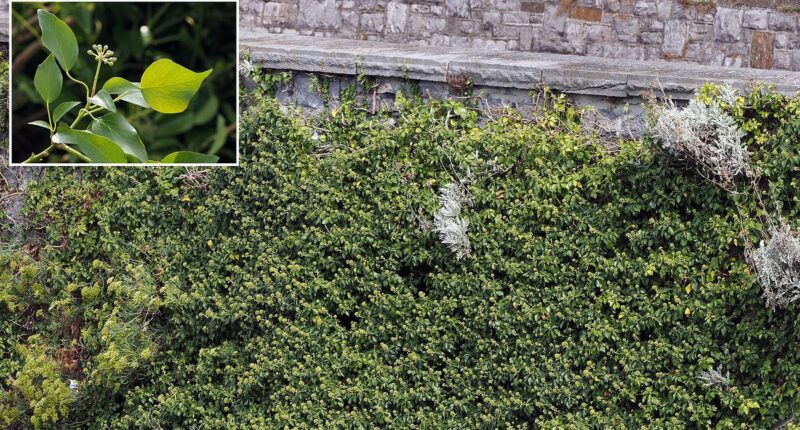Share this @internewscast.com
Residents of a charming seaside town are growing concerned about the safety of their homes after the discovery of the UK’s most ‘aggressive, destructive, and invasive’ plant along the waterfront.
A local resident identified Japanese knotweed spreading across the beautiful Hoe beachfront in Plymouth, igniting fears among nearby homeowners that the invasive plant could render their properties worthless.
Known by the Environment Agency as ‘indisputably the UK’s most aggressive, destructive and invasive plant,’ this species can penetrate concrete and is notoriously difficult to eradicate.
The knotweed was spotted along the cliff’s edge by local resident Martin Moore, who noticed a ‘vast expanse of Japanese knotweed’ thriving in the Hoe, an area of ‘distinctive natural beauty next to the Corinthian cafe’.
Mr. Moore shared with Plymouth Live that ‘It is a widespread invasive species that takes over the ecosystem, as it is doing at the Hoe, and is extending to other areas beyond the bushes.’
After joking the weed is actually a delicacy in Japane, he added: ‘On the downside it could devalue property and requires professional eradication.
‘We reported it to Plymouth Council through their dedicate Japanese Knotweed website weeks ago but no reply.’
The identification of Japanese knotweed at the cliffside increases the growing number of cases in Plymouth, marking it as the problem hotspot for this plant throughout Devon.

Japanese knotweed pictured along the cliff edge in Plymouth, Devon

An aerial picture shows the large section of Japanese knotweed that has taken over Hoe waterfront

The invasive Japanese knotweed plant, which can grow through concrete and is almost impossible to remove
Insurers have reported that tackling knotweed costs the UK economy nearly £250 million a year – not just from damage to property, outbuildings and gardens, but also from the legal risks arising from encroachment or when properties are sold.
Japanese knotweed was introduced to the UK as an ornamental plant in the 19th century and can only be removed with costly specialist treatment.
Left unchecked, it can quickly take over gardens and enter buildings through cracks or crevices, causing long-term damage.
The plant is identifiable by its hard, bamboo-like canes and distinctive shield-shaped bright green leaves which grow in a zigzag pattern along the stem.
It usually emerges in March or April and grows rapidly to reach up to 2.5 metres in height by mid-summer.
But this year, experts have warned that Japanese knotweed is spreading more aggressively than ever due to recent bouts of warm weather.

Knotweed has been spreading particularly fast this year due to warm weather conditions

Plymouth locals are now fearing the impact the plant will have on their property’s value

The invasive plant was spotted growing on the cliff edge by a Plymouth resident

The location of the Japanese knotweed on the cliff edge means that it will be particularly difficult to remove in this instance

There are now over 100,000 records of Japanese knotweed recorded in the UK annually

Plymouth City Council have assured locals that the knotweed will be tackled with ‘specialist equipment’
Specialists have said that the prolonged warm weather has created ideal growing conditions for the pernicious plant, with late August and early September being prime time for flowering.
A spokesperson for Plymouth City Council said: ‘We’re aware of this case of Japanese knotweed and have treated it in previous years, but because of its perilous position on the face of a cliff, we are looking to schedule further treatment with specialist equipment.
‘Rest assured, though, it’s on our radar and arrangements will be in place soon.’
Across the UK, there are now over 100,000 infestations of Japanese knotweed recorded annually.















